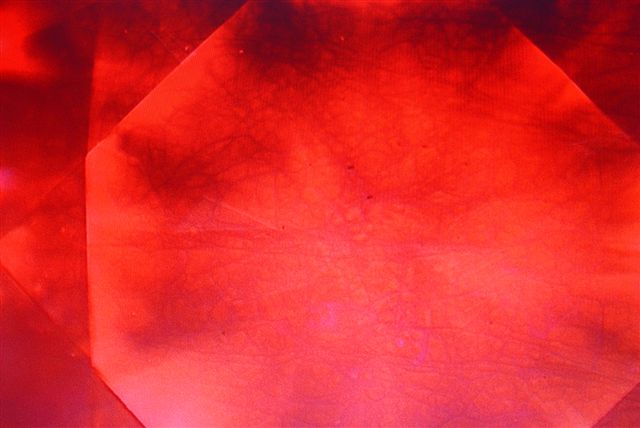Phosphorescence is a rare but fascinating phenomenon observed in some diamonds, where the diamond continues to glow in the dark for a brief period after the light source is removed. This occurs due to the absorption and subsequent re-emission of energy in the form of light. Unlike fluorescence, which ceases once the light source is removed, phosphorescence can cause the diamond to emit light for a short period, creating a striking and ethereal effect.
Understanding Phosphorescence in Diamonds
Phosphorescence occurs when certain materials, such as diamonds, absorb energy from a light source and then release that energy over time in the form of light. In the case of diamonds, it’s often a faint glow that can last anywhere from a few seconds to several minutes after exposure to light.
The glow is typically greenish-blue or bluish-white in color, though in some cases, it may appear pink or yellow. This light emission comes from the diamond’s internal structure, where the energy absorbed from the light source excites electrons in the crystal lattice, causing them to become “trapped.” Once the light source is removed, these trapped electrons slowly release the absorbed energy, which results in the glow.
Phosphorescence vs. Fluorescence: Key Differences
While phosphorescence and fluorescence are similar in that they both involve the emission of light after exposure to UV or visible light, there are distinct differences between the two phenomena:
Fluorescence: Fluorescent diamonds emit visible light immediately when exposed to ultraviolet (UV) light and stop glowing once the UV light is removed. The effect is usually instantaneous and relatively short-lived. Fluorescence is more common in diamonds and is most often seen as a blue glow.
Phosphorescence: Unlike fluorescence, phosphorescent diamonds continue to emit light for a period of time after the light source is removed, creating a glow-in-the-dark effect. Phosphorescence is much rarer and typically found in synthetic diamonds or diamonds with certain trace elements, though it can occasionally be observed in natural diamonds.
Phosphorescence in Synthetic Diamonds
Phosphorescence is more common in synthetic diamonds than in natural diamonds, particularly in diamonds created through the High Pressure High Temperature (HPHT) or Chemical Vapor Deposition (CVD) methods. These diamonds may exhibit phosphorescence due to the specific trace elements or impurities introduced during their creation.
The phosphorescent glow in synthetic diamonds is often due to the presence of certain nitrogen or boron impurities in the crystal lattice. These impurities can cause the diamond to absorb light and then release it as phosphorescent glow after the light source is removed.
Phosphorescence in Natural Diamonds
Phosphorescence is rare in natural diamonds, but it can still occur under specific conditions. In some rare cases, natural diamonds may exhibit phosphorescence due to the presence of impurities or defects in the crystal structure, although the phenomenon is typically less pronounced than in synthetic diamonds.
The glowing effect in natural diamonds is often subtle and may not be immediately noticeable without proper testing in a darkened environment. When observed, the phosphorescence in natural diamonds is typically weaker and lasts for a shorter time compared to synthetic diamonds.
Factors That Influence Phosphorescence in Diamonds
Several factors can influence the intensity and duration of phosphorescence in diamonds:
1. Type of Diamond (Natural vs. Synthetic)
Synthetic diamonds are more likely to exhibit phosphorescence, as certain impurities or processes used during their creation can result in more significant light emission after exposure to light.
Natural diamonds, while capable of phosphorescence, rarely exhibit this phenomenon, and when they do, the effect is usually less noticeable or short-lived.
2. Trace Elements and Impurities
Nitrogen: Some diamonds that have higher nitrogen content in their crystal structure are more likely to exhibit phosphorescence. Nitrogen can create color centers in the diamond, which can store energy and release it as a glow after the light is removed.
Boron: Boron impurities, which are responsible for the blue color in some diamonds, can also contribute to phosphorescence. However, the effect is more pronounced in synthetic diamonds where boron is more prevalent.
Other Impurities: Various other impurities or defects in the diamond structure can create centers that facilitate phosphorescence, though these occurrences are generally rare in natural diamonds.
3. Exposure to Light
The intensity of the phosphorescent glow depends on the amount of light the diamond is exposed to and the duration of exposure. A stronger or longer exposure will result in a more noticeable glow once the light source is removed.
The diamond’s cut and clarity can also influence how light interacts with the crystal structure and how effectively the diamond absorbs and re-emits energy.
Phosphorescence in Jewelry
While fluorescent diamonds are often sought after for their unique glow under UV light, phosphorescent diamonds are much rarer and can be seen as a unique and intriguing feature in a diamond. However, phosphorescence is not typically a desirable trait for most buyers because it is rare, and its glow can sometimes diminish the clarity or overall visual appeal of the diamond when viewed in daylight.
For collectors and enthusiasts, phosphorescence can be a fascinating and rare characteristic to observe, though it’s not typically factored into the grading or pricing of diamonds. When it does occur, it is generally not used as a selling point unless it is present in a synthetic diamond where the effect is more pronounced.
The Glowing Diamond Mystery
Phosphorescence in diamonds is a captivating but rare phenomenon that can occur when a diamond continues to glow in the dark after exposure to light. While it is more commonly associated with synthetic diamonds, certain natural diamonds can also exhibit this glowing effect, often due to specific impurities or defects in the crystal structure. Whether seen in synthetic or natural diamonds, phosphorescence adds an intriguing layer to the already fascinating world of diamonds, providing an additional dimension to their natural beauty.

